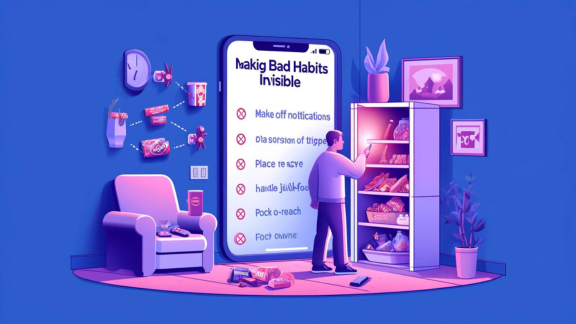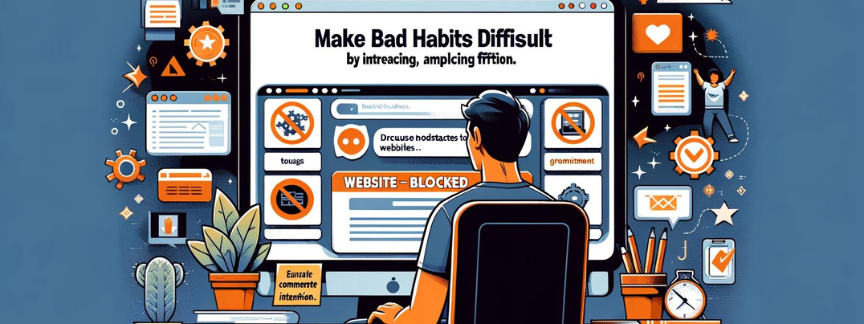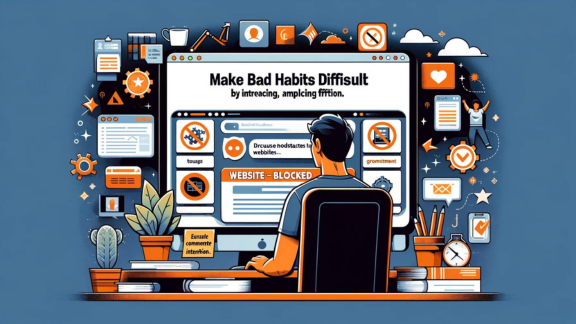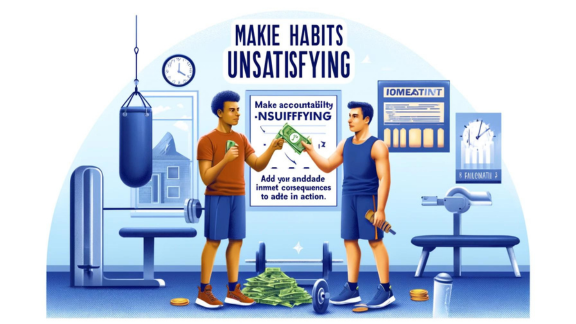
Chapter 3
Healthy habits
“The secret of your future is hidden in your daily routine.”
– Mike Murdock



Make bad habits invisible
Avoiding temptation is simpler than resisting it.
Identify cues that trigger unwanted habits.
Then, reduce exposure to these triggers.
E.g. Leaving your phone in another room to boost productivity.






Make bad habits unattractive
Habits become unappealing when linked to negative emotions.
Reframe the associations you have about your bad habits to fix them.
Highlight the advantages of not engaging in a bad habit to enhance its unattractiveness.
Instead of telling yourself “I need to go run in the morning”, say “It’s time to build my healthy body”
This shifts the focus to positive outcomes.






Make bad habits difficult
Increase the obstacles for negative behaviors to discourage them.
Amplify the friction that makes these habits hard to continue.
Consider using a commitment device to enforce your intentions and make it harder to fall back into bad habits.
Example: Block distracting websites to enhance productivity and prevent procrastination.






Make bad habits unsatisfying
Use an accountability partner to add immediate consequences to inaction.
We value others’ opinions and avoid actions that could lower their respect for us.
Example: Commit to a fitness schedule with a friend, where failing to attend results in a penalty, like paying for the other’s gym session.



Use a Habit Tracker
Track your habits to maintain consistency.
Use a simple method like marking an X on a calendar each day you complete a habit.
If you miss a day, make it a priority not to miss the next.






Feel free to share with your colleagues
Give feedback, ask questions or request new resources


